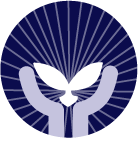Nora Grafton
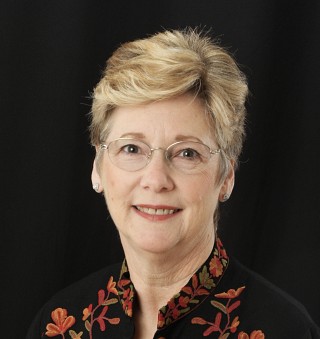
In 1970, at the age of 16, Nora (Parten) Grafton went to Japan with a high school study tour program. She stayed in Japan after the group returned to Alaska, and in 1971, at the age of 17, she joined the two-year Teacher Training Program at Dr. Suzuki’s Talent Education Institute. Nora then spent two years living in Matsumoto, Japan, and studying personally with Dr. Suzuki. She graduated from the program in 1973, returned to her home state of Alaska, and earned a Bachelor of Arts Degree with a Major in Music from the University of Alaska, Anchorage in 1977.
Nora has been teaching violin and piano, based in the Suzuki method, in Northern California for over 40 years. She is past President and currently Graduation Chair of the Suzuki Association of Northern California, a branch of the Suzuki Music Association of California. She also served as the SANC Representative for that Association, and she is an evaluator for Certificate of Merit exams for her local branch of the Music Teacher’s Association of California.
Nora’s own children, whom she raised with her husband of 40 years, Ron (a dentist), grew up playing the cello. One son graduated from the Cleveland Institute of Music, before retraining as a dentist; the other went on to become an airline pilot. Both still enjoy playing the cello.
Name in Japan: Nora Parten
Instruments studied in Japan: Violin and Piano
Other places lived since Japan: Anchorage, Alaska & San Francisco, CA
Years in Japan: I studied with Suzuki Sensei as a violin Kenyusei summer of 1971- summer of 1973. I also studied with Kataoka Sensei (piano) about a year during 1971-73. I travelled with my High School study tour September-December 1970. I lived with the Horiuchi Family in Tokyo, January 1971, until I went to Matsumoto spring or summer of 1971.
Years and locations of workshops with Dr. Suzuki or Dr. Kataoka that were outside of Japan: I attended a SAA Conference at San Francisco State University in San Francisco sometime between 1977 and 1980- not sure of the exact year. Suzuki-sensei was there.
Memories
Concerts and Train Rides with Suzuki-sensei
By Nora Grafton
I would like to thank Amanda Schubert who has worked to organize this Collection of Experiences with Suzuki-sensei. These efforts to share ideas and to learn from each other are so vital to refresh our enthusiasm to help the youngsters at home to be better people and better musicians. This Collection is particularly appreciated by those of us who spent time in Matsumoto with Dr. Suzuki. We have very fond memories of our lessons and time with Suzuki-sensei as they shaped our futures in so many ways. Dr. Suzuki’s efforts with the young children in that lovely mountain town sixty plus years ago are the reason we are all a part of this Suzuki community.
I went to Matsumoto when I was 17 years old. And you might ask, how did that happen? In 1970 I went to Japan with an Alaska High School study tour for three months. We toured Japan studying about the country and customs. The tour group then returned to Alaska, and I stayed in Tokyo with a Japanese family. I completed High School by correspondence, and I took violin lessons from Takeshi Kobayashi, who was concert master of a fine orchestra in Tokyo at that time.
In 1971, I accompanied my friend Susan Grilli, who later became a specialist on the Suzuki Pre-School, to the spring Graduation Concert at the 1964 Olympic Stadium in Tokyo. Susan was preparing a review of the Concert for a Tokyo newspaper, and she was very generous to take me with her. It was an overwhelming experience. For hours before the Concert, families arrive on buses, subways, trains, and cars from all over the country of Japan.
Much as we hold our group concerts or Play-Ins today, they started with the most advanced piece, which at that time was the Mendelssohn Concerto. More graduates were added to the ensemble with every piece that followed, until there were 3500 graduates playing Twinkle, Twinkle Little Star together. It was an extraordinary experience to witness the grace and efficiency with which the teachers and families worked together to create this miracle.
But in many ways, it was also normal. Dr. Suzuki encouraged all the teachers he trained to work together to create opportunities for their students. The big concerts and the Summer School in Matsumoto every year are just some of the examples of that philosophy.
A few days later, Susan Grilli was going to take the nearly four-hour train ride to Matsumoto to continue her interview with Dr. Suzuki. I guess she wanted some company, and she invited me to go with her. So, I eagerly tagged along.
Dr. Suzuki’s youthful enthusiasm was engaging, and the Talent Education Institute seemed like a delightful environment to study violin and learn about Dr. Suzuki’s fine teaching. On the return train ride to Tokyo, I actually rode with Dr. Suzuki. He shared with me stories about his teaching, as I had started to read the book Nurtured by Love. He told me that he felt an urgency to reach as many teachers and interested persons as he could with his philosophies regarding children’s potential, and the possibilities for all children to learn. I also discovered that the Kobayashi brothers, one with whom I had been studying, were in one of the very first groups of young children Dr. Suzuki nurtured in those early days of developing what we now know as the Suzuki Method (you can read that on page 32 of the book Nurtured by Love).
Later, my mother encouraged me to go to Matsumoto to study as a teacher trainee or kenkyusei. As a string teacher, she had been the Alaska representative for the 1964 Suzuki Workshop at the Eastman School of Music in Rochester, New York, and she was fascinated with Dr. Suzuki and the accomplishments of the ten Tour children.
So, I spent the next two years, 1971-1973, in Matsumoto. The experience created such a strong influence in me that it has guided the rest of my life. I cannot over-emphasize the value of making the trip to Japan to see Suzuki teachers in action there.
Dr. Suzuki created many little impromptu performance opportunities for the young students in and around Matsumoto. When teachers, performers or dignitaries made the trip to Matsumoto to learn something about the Suzuki Method, Sensei would organize instant concerts. Children would meet visitors as they arrived at the train station with a concert. Or there would be impromptu concerts at the Talent Education Institute for visitors from around the world. It was very exciting for the children to play for these important guests. It encouraged lots of review, so as to be ready! Each of these little performances were so validating and affirming to the young musicians and their efforts to develop their skills.
Life in Matsumoto in 1971 was quite an adventure. There was no English anywhere, except from Dr. and Mrs. Suzuki. They made every effort to make us feel at home. We were included for Christmas dinner of roast duck and German chocolates! There were only two or three of us from the States and we didn’t see each other every day. We were busy practicing our pieces, working on our tone, observing fine teachers work magic with their young students, and just living.
I went to Matsumoto with a tourist-level command of the Japanese language. That was functional in Tokyo, but severely deficient in the country town of Matsumoto. In order to eat and accomplish daily essentials, we all gained a practical ability with the difficult Japanese language very quickly. The people were very kind, but a different language is in fact a different way of thinking, a different way of understanding!!! I think it is so important for young people to go to another country to learn about another culture and a new language. There is a big world out there.
Part of the study method for us kenkyusei, teacher trainees, was to observe the lessons given by teachers we admired for an extended period of time. There were so many very young children playing at such a high level. It was both inspiring and humbling to witness. At first one might think that this was creating huge numbers of professional musicians. In fact, that was not Dr. Suzuki’s goal. Rather he wanted as many children as possible to benefit from the many skills one acquires when learning to play a musical instrument.
In creating finer human beings, his goal was to make the world a better place. As you know, the youngsters develop performance skills, memory skills, the ability to play their instrument skillfully, and the list goes on and on. Their lessons created lots of amateur musicians with life skills to be better, more successful people.
This philosophy is useful in subjects other than music, and not just with children. My cousin, Alan Atkisson, visited Dr. Suzuki in Matsumoto in 1982. Alan has become a leader on the subject of sustainability, which is about tackling big problems like global poverty and climate change. He’s been a consultant to major companies, country governments, cities and universities across the world on those subjects. In 1982, when he was a young man of 22 traveling on a fellowship, he visited Matsumoto. As Sensei did with anyone who came to visit, he took time to explain to Alan about the Suzuki Method philosophies. With great patience and warmth, Dr. Suzuki shared his stories, emphasizing that it is more important to create many happy amateur musicians than a few concert professionals. Years later when Alan began to design workshop methods and teaching tools for the field of sustainability, he realized that we did not need a lot of “professionals” working on these complex problems; we needed many thousands or millions of skilled amateurs. His own methods and tools for engaging larger groups on sustainability have now spread around the world, especially in schools, and he has told me many times that his visit to Matsumoto was a big influence on his work.
In closing, I would just like to recall how Sensei took such joy from the success of the children. Of course, a very young child could learn to play tak-a-tak-a-tak-a and continue to progress. Sensei celebrated every success. The thought that it might not be possible did not enter his brain. As the children played the piece 10 times or 100 times, it became easy to play. It also became more and more fun to play the piece, the better they knew it. It built their confidence, and it also gave them joy. That’s why Dr. Suzuki felt an urgency to develop the skills of each child in this way, because he believed it led to developing a better human being, and therefore a better world.
Photos in Matsumoto

Helen Higa (left), Nora, Suzuki-sensei
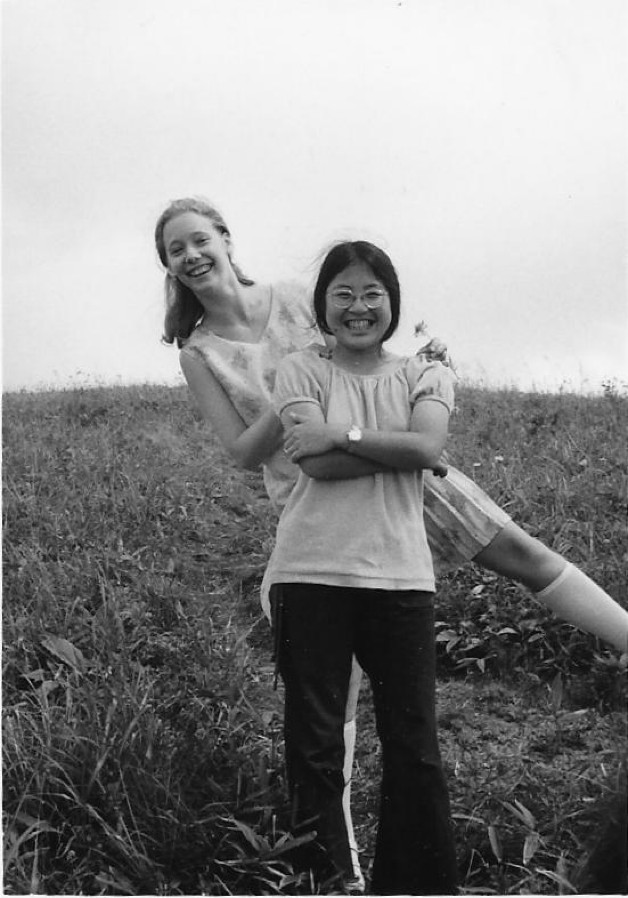
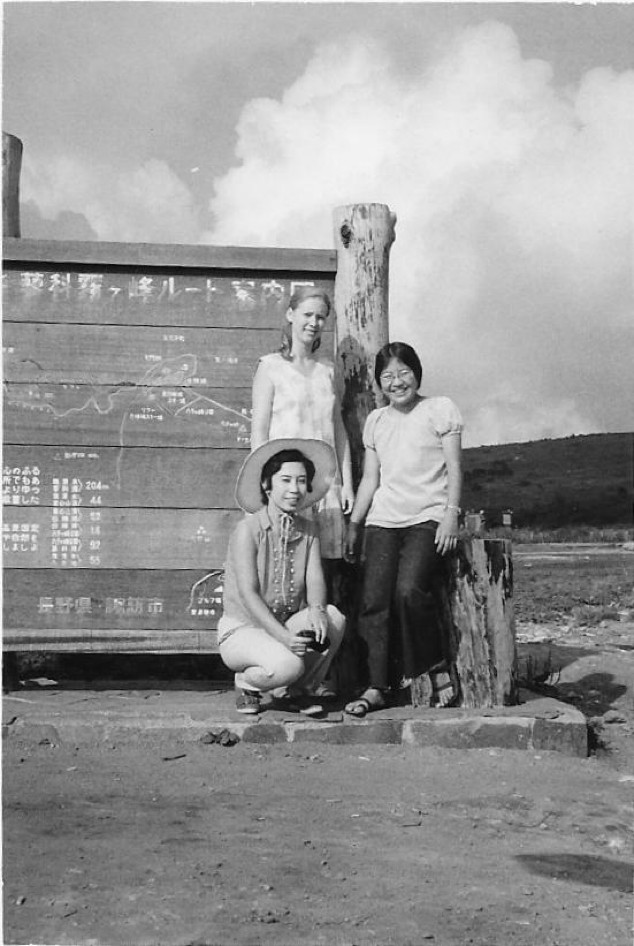
Nora with Helen Higa
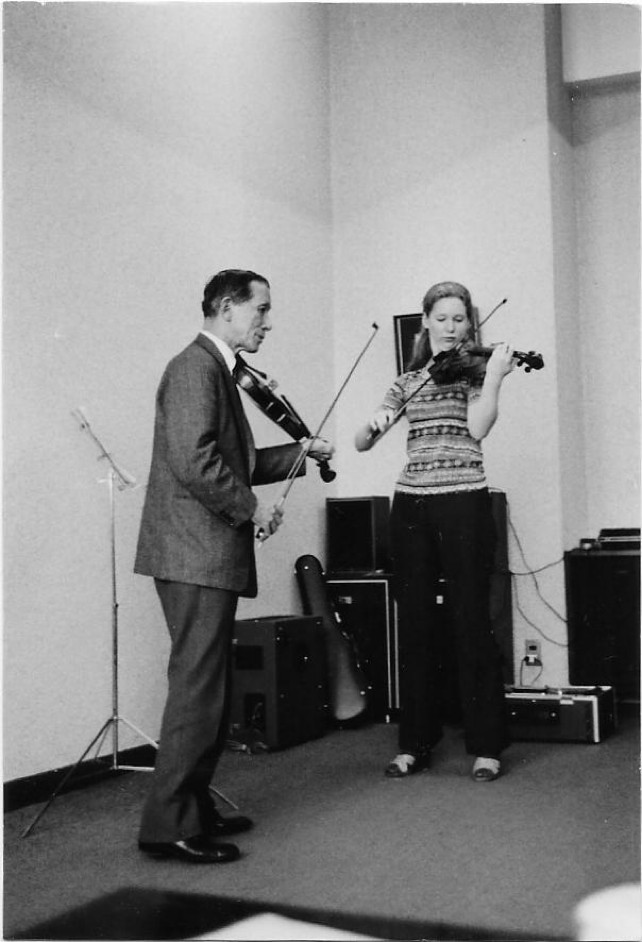
Nora with Suzuki-sensei during a lesson in his studio in the kaikan

Lessons with Suzuki-sensei

Nora with Suzuki-sensei
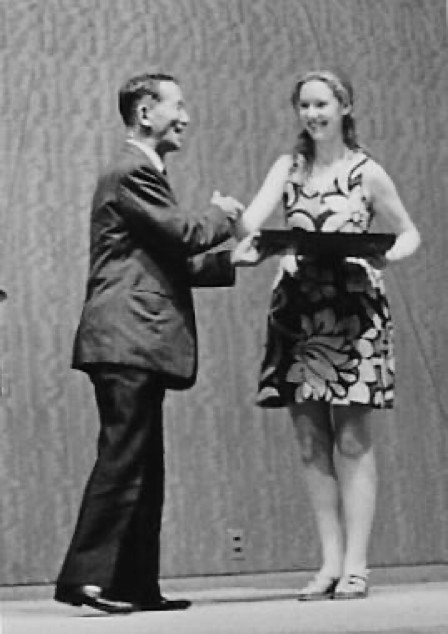

Nora with Suzuki-sensei on graduation day

